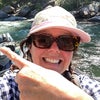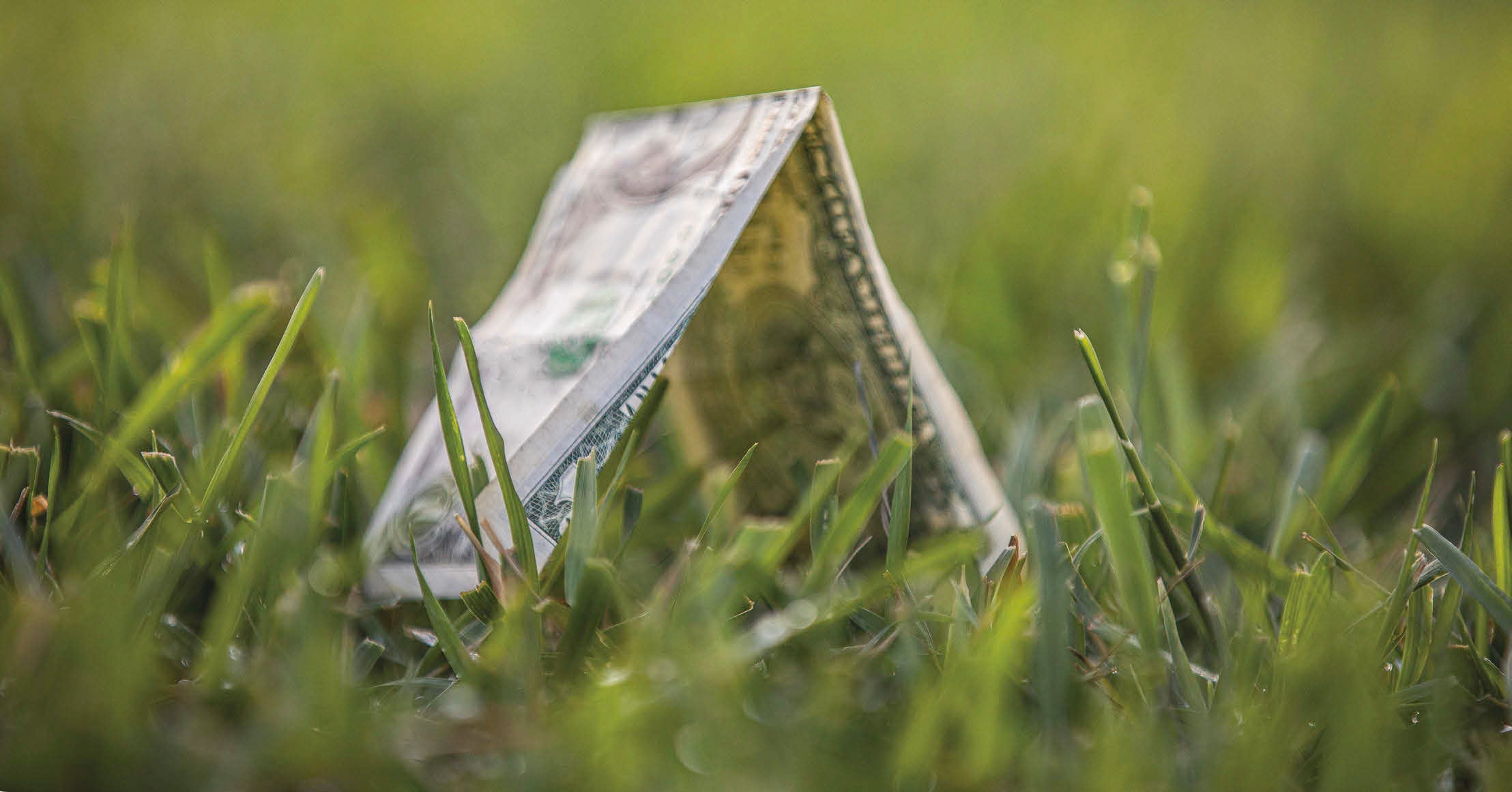Holly Phillips grew up in Ona, West Virginia, exploring the outdoors on fishing trips with her dad. The two would set out on a Friday evening, camp near a river, and start casting the next morning. Their gear consisted of what they could afford at the local Kmart or Walmart. “I always got cold in cheap sleeping bags. And if it rained, the tent walls would soak through,” says Phillips. As a result, Phillips’s earliest outdoor experiences were a combination of joy, because she was outdoors, and sufferfests, because her gear was so low quality. “But even as I grew older, I didn’t know any better because people like me—low income and outside the normal demographic of backpackers, climbers, or even avid hikers—are left out of the outdoor conversation,” she says.
It wasn’t until she moved to Boulder, Colorado, in 2012 at age 29, that the single mom even heard of Patagonia or Black Diamond. One day, she ventured into one of the town’s premier outdoor stores, Neptune Mountaineering. “When I saw the price tags, I was so bummed,” says Phillips, who was making roughly $16 an hour at the time (which is more than five dollars above the national average minimum wage). “I knew I could never afford that stuff.”
She is not alone. Outdoor Foundation’s 2018 Outdoor Recreation Report shows the high cost of gear is the second most common deterrent for getting outside. (“Too busy” was number one and “Places for outdoor recreation cost too much” is number six.) For years, the outdoor industry has claimed it wants to be more diverse, equitable, and inclusive. If affordability is one of the biggest barriers to inclusion, are we really addressing it?
What Does Affordable Mean?
When Phillips struck out at Neptune, she headed to REI and was overwhelmed by the prices there, too. It’s a common problem says activist Cianna Walker-Flom, who has criticized the outdoor industry for being “intimidating and exclusionary for those who are underrepresented.” She believes a key way to welcome them in is for brands to partner with nonprofit organizations that serve underrepresented populations to offer them upcycled (or new) gear at greatly reduced prices for lending libraries.
The fact is, “affordable” is a relative term. But you could say several brands in the industry are already delivering. In the sleeping bag realm, for instance, Marmot, Kelty, The North Face, and Slumberjack have produced sub-$100 bags for years. But even a $79 bag would be pushing it for a minimum wage earner. [Patricia Cameron reported on this problem in our Winter 2020 issue: “It would take a minimum wage worker two full eight-hour days to afford new hiking shoes from most outdoor brands,” she wrote.] And there remains an undeniable performance gap between a $69 Kelty bag that works as a legitimate (albeit bulky) backcountry option and the $25-dollar Walmart variety that left Phillips cold.
Gear Everyone Can Afford
Brands have very different views on what’s possible when it comes to price versus performance. Durability, for example, is subjective (see p. 48), and Big Agnes founder Bill Gamber acknowledges that even his $200 “entry-level” tent is out of reach for many people like Phillips. But, he says, skimping is risky. “Check the dumpsters in Moab. They’re full of Costco and Walmart tents,” he says. “It’s just not possible to make a $100 tent that will last. At least I haven’t figured out how to do it.”
Kelty has almost cracked that nut—it offers several quality two-person tents that are just north of 100 bucks. Senior vice president and general manager Russ Rowell is content in that middle market and doesn’t intend to chase even lower prices. “Once a brand presents itself downstream, it’s very hard to go upstream,” he says. That creates a hole in the market which is precisely where two companies—Decathlon and Walmart—see opportunity.
In 2017, the 43-year-old French sporting goods giant Decathlon entered the U.S. market. The brand takes pride in providing quality gear at extremely low prices, and its one-year, 352 percent sales growth in the U.S. proves that people are hungry for decent gear at rock bottom prices. Consumers flock to the 47,000-square-foot Bay Area store for daypacks as low as $3.50 (not a typo) and tents that cost just $59. The company’s scale—it has 93,000 employees worldwide—allows it to build gear at prices so low it’s easy to doubt the quality, but review after review, from the likes of ���ϳԹ���, BACKPACKER, and Runner’s World, praise the brand’s performance-to-price ratio.
And hot on Decathlon’s heels is the icon of affordability in the U.S.: Walmart.
Walmart’s Bid for Backpackers
Eoin Comerford, CEO of Moosejaw, which is owned by Walmart, made a splash in 2018 with his efforts to bring premium brands and premium prices to Walmart customers by creating a “premium outdoor store” online. At the time, Comerford believed he was introducing high-end outdoor products to people who’d never been exposed to them. But the project failed after brands including Black Diamond, Deuter USA, Katadyn, Therm-a-Rest, and Leki pulled out, insinuating that by selling on Walmart.com, they’d take the special out of specialty brands.
Comerford learned from the failure. In April, he told The Voice, “We [moved] away from the Premium Outdoor Store because the whole idea of premium versus everyday brands ran counter to our goal of inclusivity.” Instead, he wanted to create an “everyday” brand that would offer “specialty-level performance and quality” to customers of Walmart and fill what he says is a huge gulf between mass market and specialty backpacking gear. “The most likely source of beginner backpackers are car campers who already enjoy life in a tent,” he says. “The most recent KOA North American Camping Report shows car camping is already becoming more diverse. Non-white active camper households increased from 12 percent in 2012 to 31 percent in 2018. Even more encouraging, people of color made up the majority—51 percent—of first-time campers in 2018.”
Comerford believes that price is standing in the way of more people becoming backpackers. So in May, he led the Walmart launch of two “mid-tier” brands that sell through both Walmart and Moosejaw channels and cost the same on each website. Lithic is a backpacking equipment brand that includes tents, bags, packs, stoves, and cookware (also sold in Walmart stores) for prices ranging from $25 to $148. Allforth (online only) offers men’s and women’s fair-weather (nothing waterproof or insulated) hiking apparel in regular and plus sizes with prices ranging from $13 to $40.
The products are made in China by factories with experience manufacturing enthusiast-grade outdoor equipment, says Comerford. R&D was a team effort between Moosejaw experts, Walmart development and sourcing teams, and these factory partners.
The least expensive Lithic sleeping bag is a 35-degree synthetic that weighs just under 4 pounds and costs $64, which is comparable to many price-point bags already offered by established outdoor brands. The thing is, Walmart shoppers may not be familiar with Kelty and The North Face. This effort is about bringing new and better-performing alternatives to Walmart’s huge audience—many of whom may be people who, as Phillips says, are left out of the outdoor conversation.
The new brands launched just a few weeks before press time. Reviews are still coming in, and some of them are not glowing (google it for yourself).
Performance aside, some skeptics, like Walker-Flom, see Walmart’s move as opportunistic, not altruistic. “This is an issue of stores realizing they’re missing out on a whole market segment of passionate campers with limited funds. It’s great to have access to more affordable gear, but when it’s lower quality, you’ll pay now and then pay again when it wears out or breaks.”
But Comerford remains adamant that Lithic and Allforth will break down barriers by leveraging Walmart’s massive, loyal customer base and introducing them to better quality gear. “With the current backdrop of Black Lives Matter, it’s never been more important to grow the outdoor pie by making participation more inclusive,” he says.


